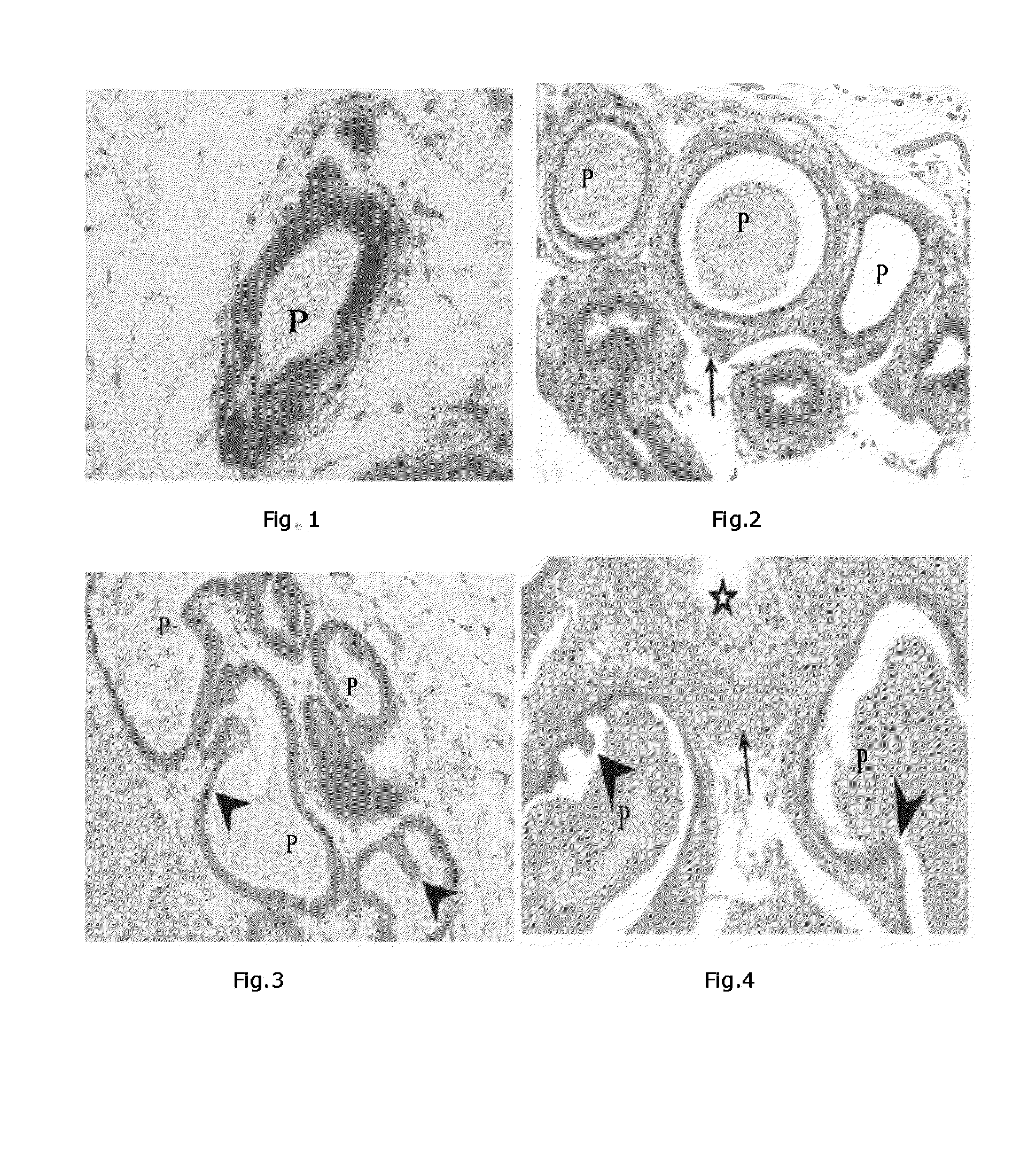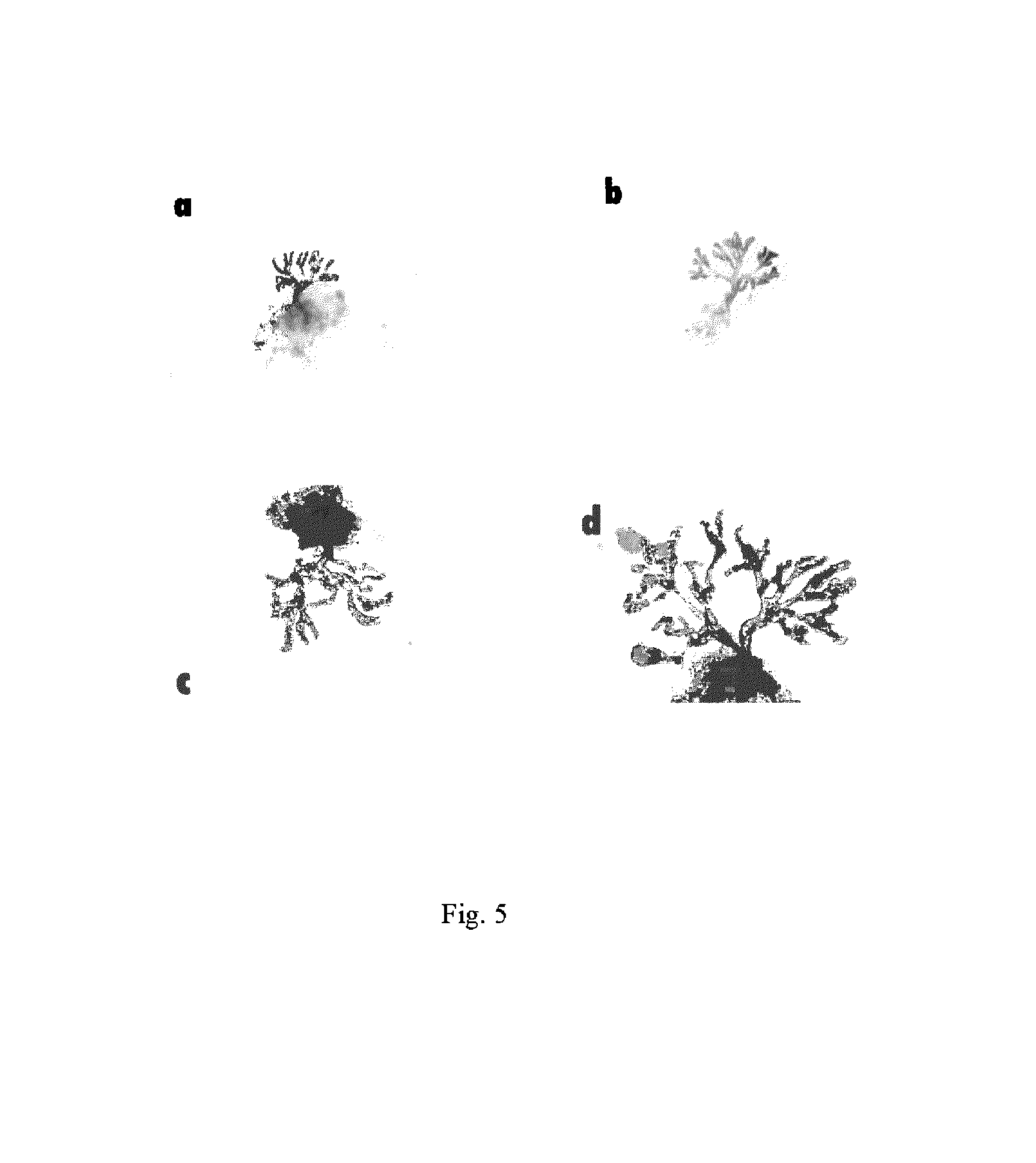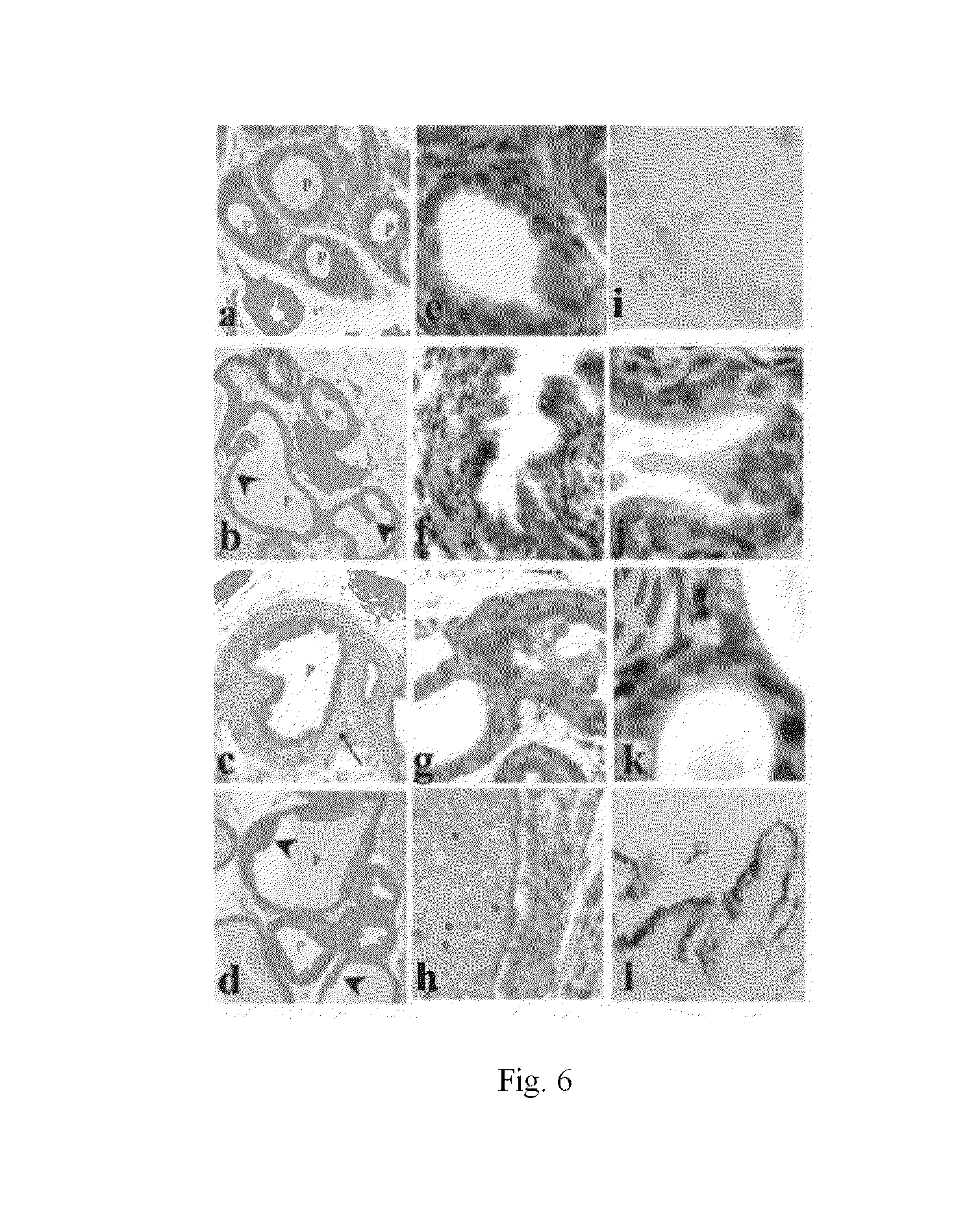Methods for therapeutic treatment of benign prostatic hypertrophy (BPH)
a benign prostatic hypertrophy and therapeutic treatment technology, applied in the direction of peptides, drug compositions, peptides, etc., can solve the problems that the 5-reductase inhibitors have not been more effective in the treatment, and achieve the effect of reducing the amount of prostatic hypertrophy
- Summary
- Abstract
- Description
- Claims
- Application Information
AI Technical Summary
Benefits of technology
Problems solved by technology
Method used
Image
Examples
example 1
[0113]Analysis of the Differential Effects of Testosterone and IGF-I on Restoration of Impaired Prostate Development in Dwarf Mice.
[0114]Groups of castrated IGF-I(− / −) null male mice were treated with either vehicle, testosterone in silastic capsules, des(1-3) IGF-I by an infusion through an Alzet pump containing 20 μg per pump, or the combination of testosterone and IGF-I for a period of 7 days.
[0115]In order to determine which specific structure was affected by which hormone, entire urogenital complexes were embedded in paraffin blocks, including the prostate glands, coagulating glands, seminal vesicles, urethra, urinary bladder attached to parts of the ureter, vas deferens, and ampullary glands. These were carefully sectioned such that the areas of prostate development could be analyzed.
[0116]The prostates were then removed, fixed and examined histologically. Morphometric analysis was carried on 30 cross sections of the prostate taken from five different serial sections. Changes ...
example 2
[0120]The differential effects of hormones IGF-I and testosterone on development of different compartments in the prostate is further demonstrated in assessing IGF-I receptor immunopositive cells in prostate elements. IGF-I and testosterone synergize in stimulating IGF-I receptor staining in epithelial elements but not in fibromuscular elements as shown in TABLE 2.
TABLE 2% IGF-I RECEPTOR IMMUNOPOSITIVE CELLSEPITHELIUMFIBROMUSCULARCONTROL00IGF-I20 ± 0.5 100 ± 0.02TESTOSTERONE095 ± 0.4IGF-I + TESTOSTERONE98 ± 0.0685 ± 0.8
example 3
IGF-I is Essential for Normal Prostate Development
[0121]GH-deficient animals demonstrate impaired prostate development. These include transgenic mice overexpressing a GH antagonist (that binds to and inactivates GH receptors making the animals functionally deficient in GH), growth hormone releasing factor receptor (GHRH-R− / −) knockout mice (Lit / Lit), and Ames (df / df) mice (Prop 1 Deficiency). Deficient prostate development in GH inhibitor overexpression animals was previously reported (see Ruan et al, Endocrinology 140:1984-1989, 1999). Analysis of development was determined by dissecting away the periprostatic fat and teasing the glandular structures from the connective tissue in a solution containing collagenase so that the entire glandular tree could be photographed for later structural analysis. Much the same as in the mice overexpressing the mutant growth hormone, the other GH deficient mice had significant impairment of prostate development (p<0.0002) including a reduction in ...
PUM
| Property | Measurement | Unit |
|---|---|---|
| body weight | aaaaa | aaaaa |
| area | aaaaa | aaaaa |
| volume | aaaaa | aaaaa |
Abstract
Description
Claims
Application Information
 Login to View More
Login to View More - R&D
- Intellectual Property
- Life Sciences
- Materials
- Tech Scout
- Unparalleled Data Quality
- Higher Quality Content
- 60% Fewer Hallucinations
Browse by: Latest US Patents, China's latest patents, Technical Efficacy Thesaurus, Application Domain, Technology Topic, Popular Technical Reports.
© 2025 PatSnap. All rights reserved.Legal|Privacy policy|Modern Slavery Act Transparency Statement|Sitemap|About US| Contact US: help@patsnap.com



